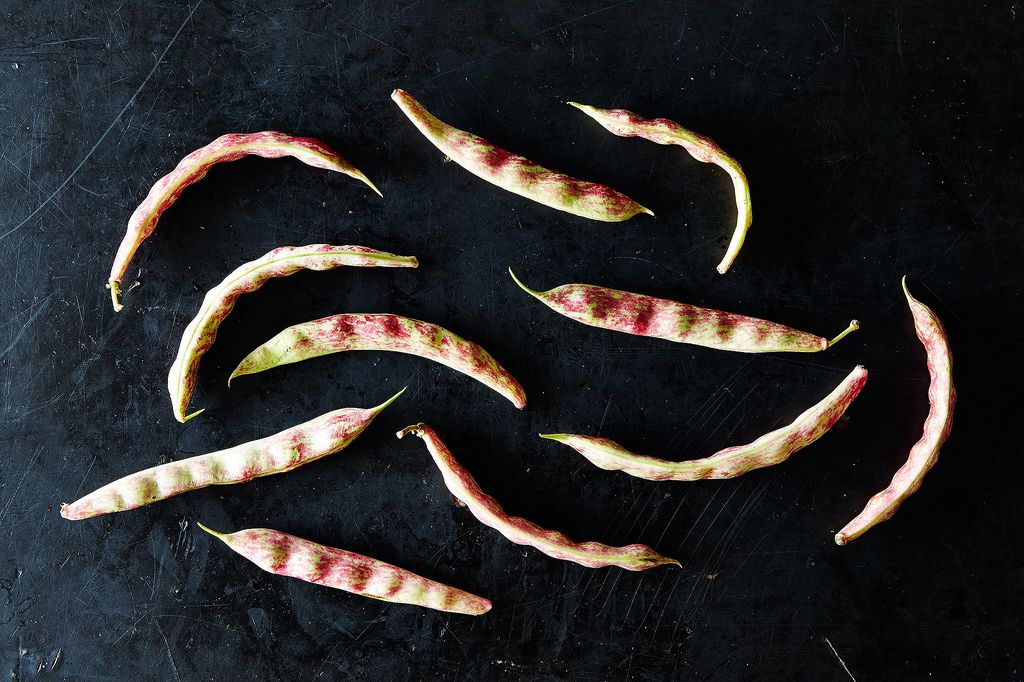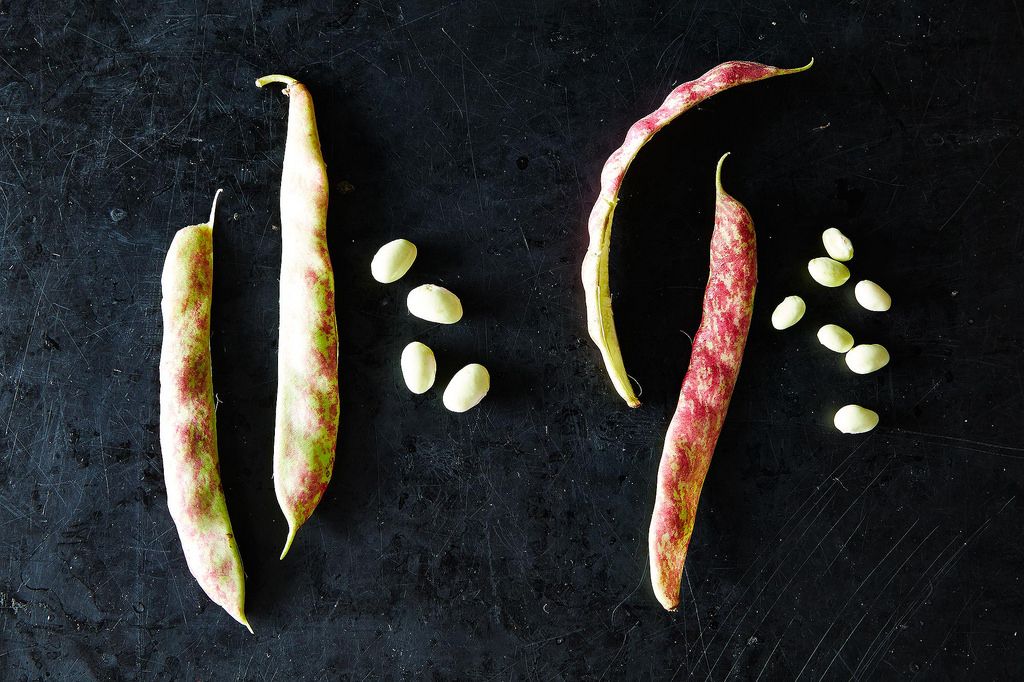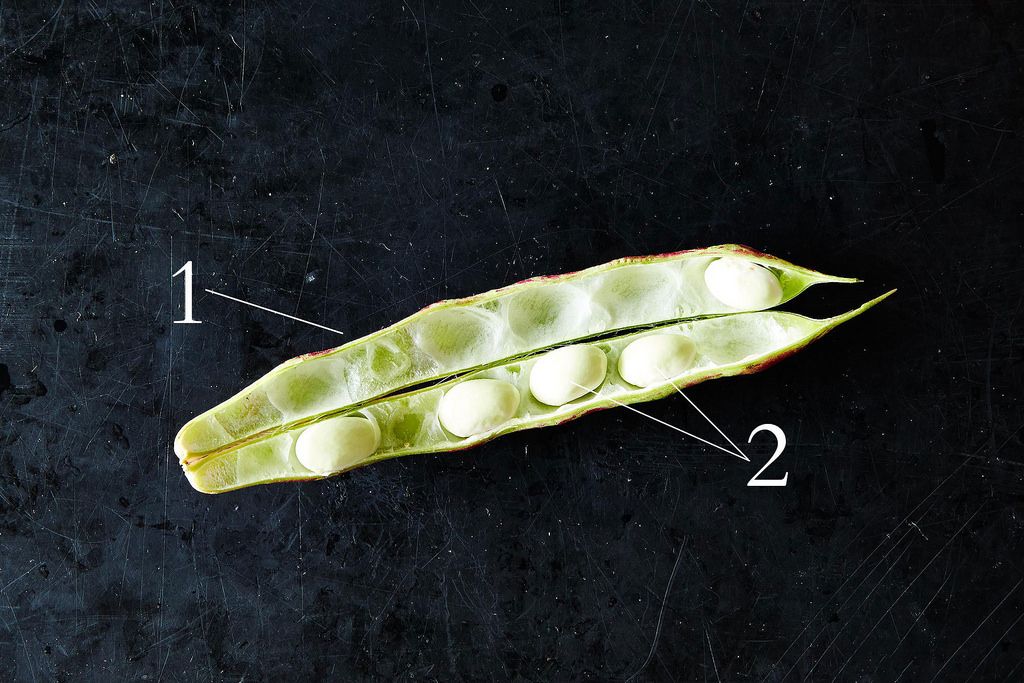Every week we get Down & Dirty, in which we break down our favorite unique seasonal fruits, vegetables, and more.
Today: We like to get fresh. Fresh beans, that is.

Shelling beans, like these cranberry beans, are...beans (your reaction to this news). This means they belong to the legume family, along with green beans, peas, and other less obvious members of the tribe, like jicama.
If you aren’t quite sure what the term "shelling bean" refers to, refresh your memory of a bean’s lifecycle, courtesy of Deborah Madison. She explains that whether beans grow on bushes or poles, they can be eaten at three different stages: first as green beans or snap beans (which can also be purple and yellow); then as shelling beans (when the bean seed has formed but is not yet dried); and finally, as dried beans. Of course not all types of beans can be eaten at all three stages -- some types we tend to only eat at the green bean stage, while with others, we eat only the bean and not the pod.
More: Stock up on the very best dried beans and then brush up on the basics of bean cooking.

Head to your local farmers market or well-stocked grocery store to find fresh cranberry beans. You’re most likely to find them from late summer into the fall, so depending on where you are, it might be the end of their season. All hope is not lost though; as chef Aliza Green notes, they’re also “sporadically available throughout the year, especially in Asian and Italian markets.”
Keep your eyes peeled for cranberry beans' distinctive cranberry-and-cream striated pods (they also might be labeled as horticultural, borlotti, or borlotto beans). The beans inside may or may not be speckled too, but temper your excitement over their mottled beauty. Elizabeth Schneider cautions: “Do not be seduced by the bird-of-paradise hues that many flaunt when mature; they change to those of house sparrows when cooked -- beige with occasional brown or mauve speckles.” Don’t let their eventual drab color dissuade you from seeking out these beans in their intermediate stage of growth, however; shelling beans are a treat worth getting your hands on (just think about how good other types of fresh beans are: fava beans, fresh chickpeas, edamame).

Store your shelling beans in a paper bag in the refrigerator -- they'll be fine for a few days. If you know you won’t be able to get to them that quickly, keep in mind that they also freeze well, either simply shelled or cooked. To shuck (that is, shell) fresh beans, simply pop open their pods (1) and remove the beans (2).
Since fresh cranberry beans are beans (your reaction again), you can use them (and other types of shelling beans) anywhere you’d used dried beans. But part of the appeal of fresh shelling beans is their creamy texture and mild flavor, so they're arguably best enjoyed through simple preparations: simmered with a few aromatics, blended into a creamy soup, or paired with grains and vegetables. Keep in mind that fresh beans don’t need to be soaked first, and they’ll cook much faster than dried beans -- likely between 20 and 40 minutes, depending on the type of bean, how fresh it is, and your desired level of doneness.
Tell us: How do you like you use fresh shelling beans?
Photos by James Ransom




See what other Food52 readers are saying.